The separation of a mixture of liquids by distillation is called
filtration
sedimentation
fractional distillation.
decantation
To answer the question, "The separation of a mixture of liquids by distillation is called," we will follow these steps:
1. Understand the Process of Distillation: Distillation is a method used to separate components of a mixture based on differences in their boiling points. It is particularly effective for separating liquids.
2. Identify Types of Distillation: There are different types of distillation methods:
- Simple Distillation: Used when the boiling points of the components differ significantly (usually more than 25 degrees Celsius).
- Fractional Distillation: Used when the boiling points of the liquids are close together (less than 25 degrees Celsius).
- Steam Distillation: Used for temperature-sensitive materials.
3. Determine the Correct Term: Since the question specifically refers to the separation of a mixture of liquids by distillation, and given that the boiling points of the liquids can be close, the appropriate term to describe this process is Fractional Distillation.
4. Conclusion: Therefore, the separation of a mixture of liquids by distillation is called Fractional Distillation.
Final Answer:
The separation of a mixture of liquids by distillation is called Fractional Distillation.
---
- Simple Distillation: Used when the boiling points of the components differ significantly (usually more than 25 degrees Celsius).
- Fractional Distillation: Used when the boiling points of the liquids are close together (less than 25 degrees Celsius).
- Steam Distillation: Used for temperature-sensitive materials.
The separation of a mixture of liquids by distillation is called Fractional Distillation.
Topper's Solved these Questions
- TEST PAPER 1 (CHAPTERS 1 TO 5)BOOK - ICSECHAPTER - TEST PAPER 1 (CHAPTERS 1 TO 5)EXERCISE - Fill in the blanks
8 Videos
- TEST PAPER 1 (CHAPTERS 1 TO 5)BOOK - ICSECHAPTER - TEST PAPER 1 (CHAPTERS 1 TO 5)EXERCISE - Write true or false. Correct the false statements.
8 Videos
- PHYSICAL AND CHEMICAL CHANGES BOOK - ICSECHAPTER - PHYSICAL AND CHEMICAL CHANGES EXERCISE - Think and answer
4 Videos
- TEST PAPER-2 (CHAPTER 6 TO 9 )BOOK - ICSECHAPTER - TEST PAPER-2 (CHAPTER 6 TO 9 )EXERCISE - Answer the following in detail
3 Videos
Similar Questions
CS2 can separate a mixture of
View SolutionDraw a diagram of bubble plate type fractionating column. When do we requir such type of a column for separating two liquids. Explain the principle involved in the separation of components of a mixture of liquids by using fractionating column. What industrial applications does this process have ?
View Solutionrepresents the distillation of mixture of liquid A and liquid B which gives both of pure liquid A and B . Represents the azeotropic mixture of HNO3 and H2O which distillation gives an azeotropic mixture and either of pure liquid. We cannot separate both the pure liquid, i.e., H2O and HNO3.
a solution of 50% of A and 50% of B on distillation results into
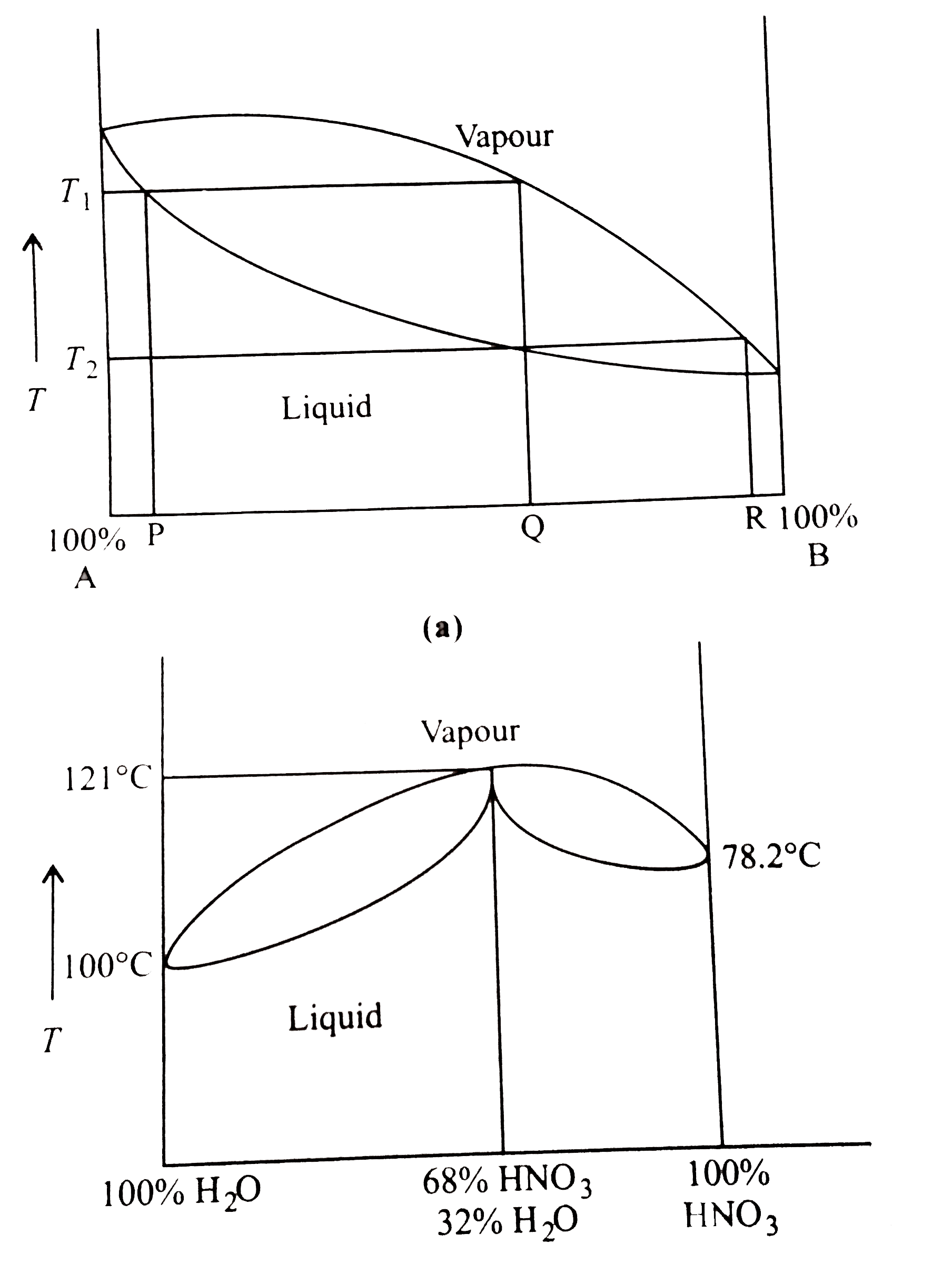
Separation of an azeotropic mixture and pure A .
Separation of an azeotropic mixture and pure B .
Separation of both pure A and pure B .
None of these
View Solutionrepresents the distillation of mixture of liquid A and liquid B which gives both of pure liquid A and B . Represents the azeotropic mixture of HNO3 and H2O which distillation gives an azeotropic mixture and either of pure liquid. We cannot separate both the pure liquid, i.e., H2O and HNO3.
What is the result of distilling a mixture of 80%HNO3 and 20%H2O?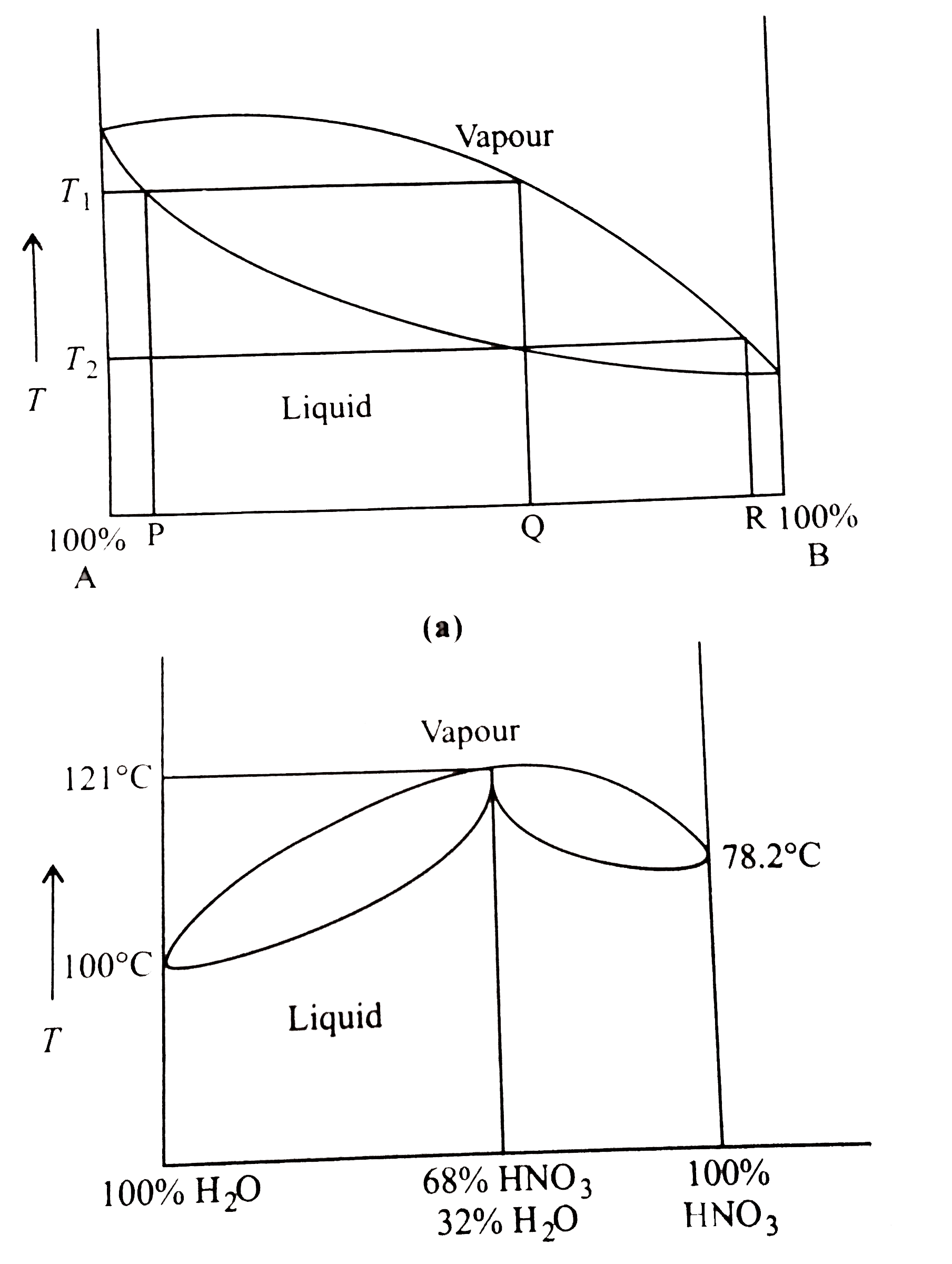
(a)Pure H2O and azeotropic mixture can be separated.
(b)Pure H2O and pure HNO3 can be separated.
(c)Pure HNO3 and azeotropic mixture can be separated.
(d)None of these
View Solutionrepresents the distillation of mixture of liquid A and liquid B which gives both of pure liquid A and B . Represents the azeotropic mixture of HNO3 and H2O which distillation gives an azeotropic mixture and either of pure liquid. We cannot separate both the pure liquid, i.e., H2O and HNO3.
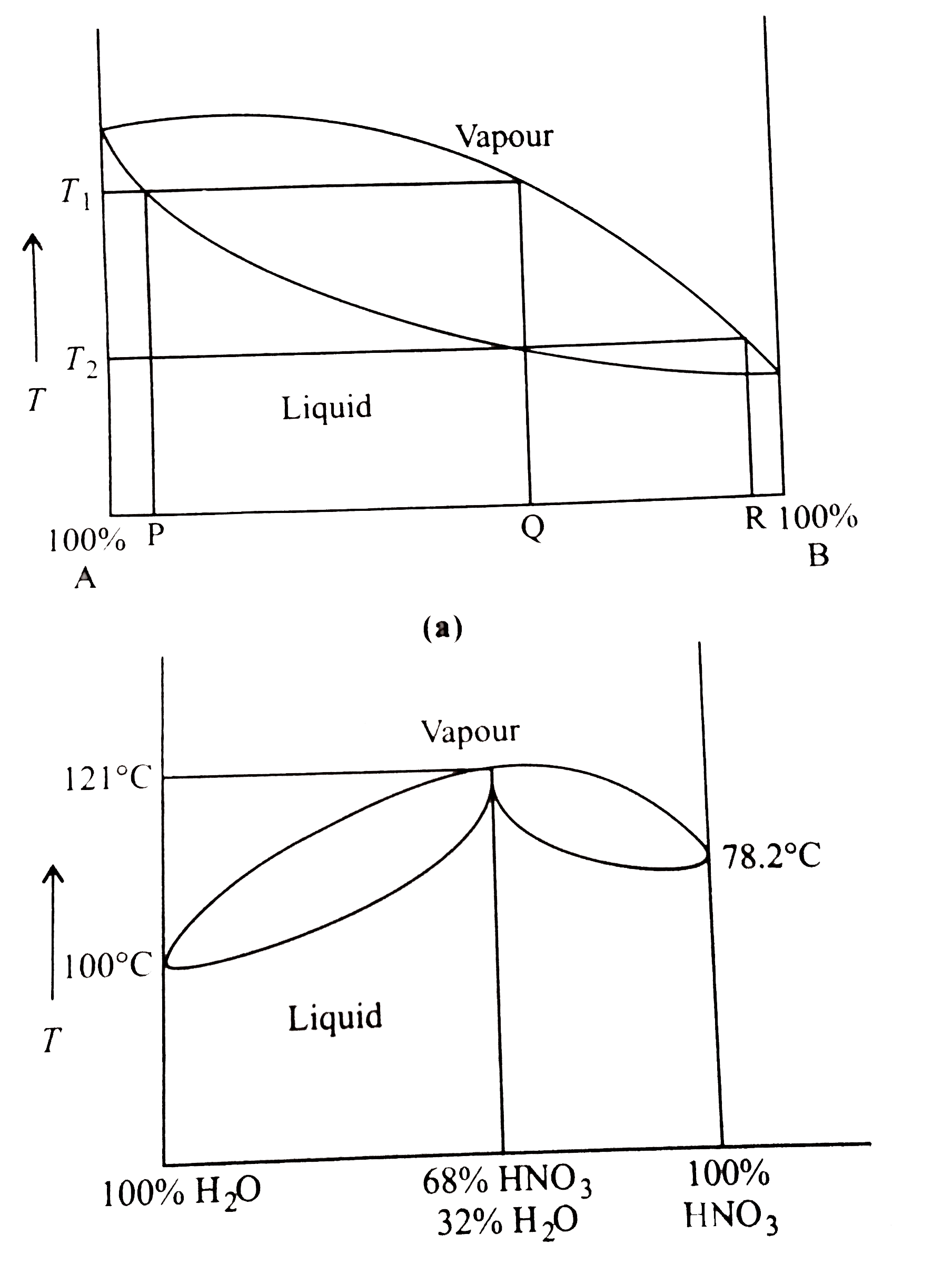
What is the result of distilling a mixture of 50%HNO3 and 50%H(2)O ?
a.Pure water and azeotropic mixtue can be separated.
b.Pure H2O and pure HNO3 can be separated.
c.Pure HNO3 and azeotropic mixture can be separated.
d.None of these
View SolutionCan we separate the components of azeotropic mixture by distillation?
View Solutionrepresents the distillation of mixture of liquid A and liquid B which gives both of pure liquid A and B . Represents the azeotropic mixture of HNO3 and H2O which distillation gives an azeotropic mixture and either of pure liquid. We cannot separate both the pure liquid, i.e., H2O and HNO3.
Which of the following statements is/are correct?
i. HNO3 solution is not obeying the Raoult's law.
ii. More the difference in vapour pressure of pure compounds forming a mixture, easier to separate them through distillation.
iii. T2 is less than T1 because the liquid of composition Q is richer in more volatile component.
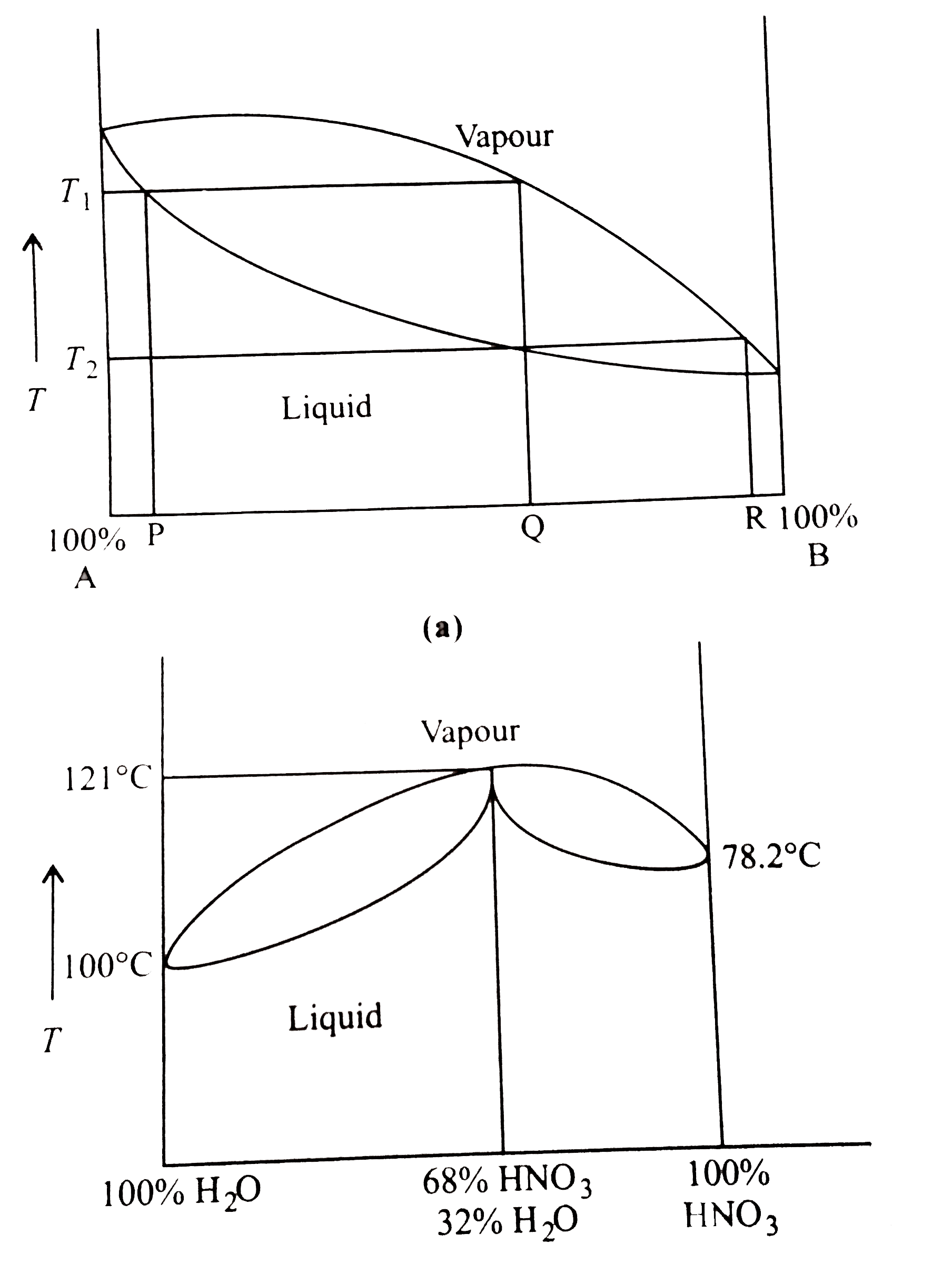
View Solutionrepresents the distillation of mixture of liquid A and liquid B which gives both of pure liquid A and B . Represents the azeotropic mixture of HNO3 and H2O which distillation gives an azeotropic mixture and either of pure liquid. We cannot separate both the pure liquid, i.e., H2O and HNO3.
At temperature T1 and composition Q, which of the following is true?
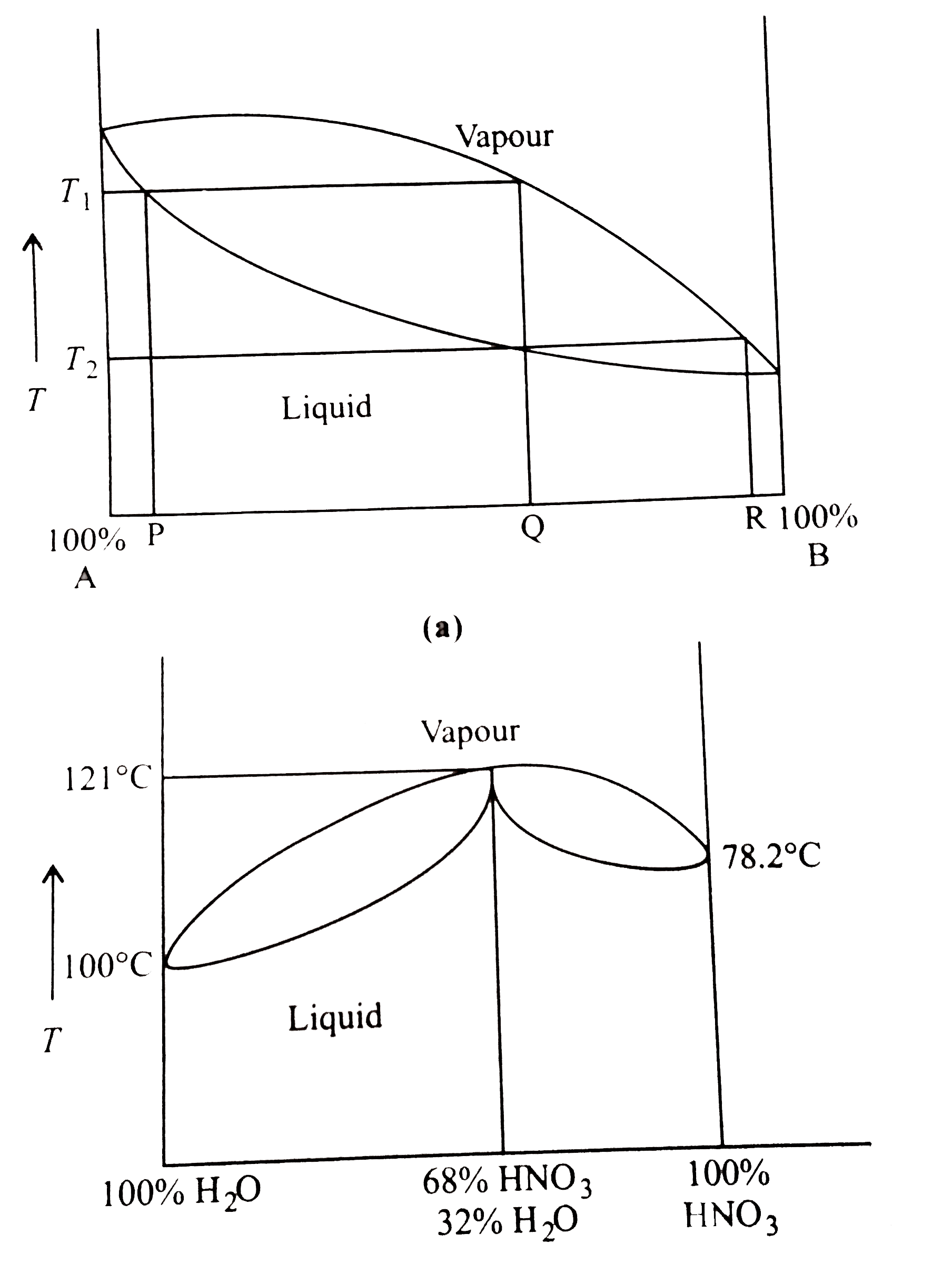
a.Vapour phase is richer in B while liquid phase is richer in A .
b.Distillation of composition Q gives only pure A .
c.Distillation of composition Q gives only pure A and pure B .
d.Distillation of composition Q gives higher percentage of B and A .
View SolutionThe process of separation of a recemic mixture into d- and 1- components is called .........
View SolutionThe diagram represents fractional distillation for separation of mixtures. Answer the following: Separation of liquids by this process is based on which physical property.

View Solution
